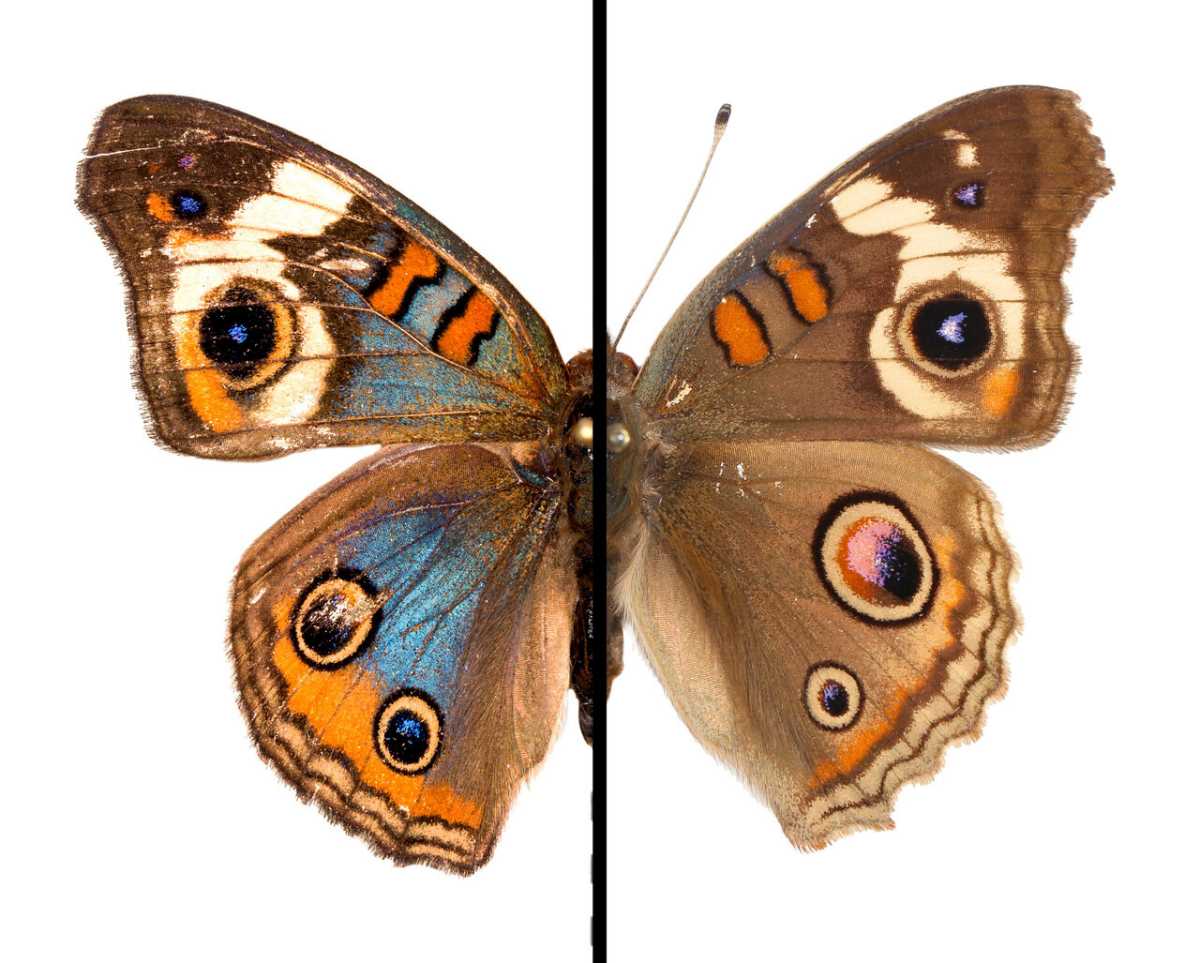Infrared Vision
Infrared light has longer wavelengths than the visible spectrum, making it undetectable by the human eye. However, mosquitoes and bed bugs, frogs, certain fish, vampire bats, and many types of snakes can use infrared waves to locate heat sources emanating from their prey.
This is because heated objects emit light. Objects that are truly hot emit light visible to humans, which is why pieces of molten metal appear red to us. On the other hand, animal bodies emit infrared light, which is picked up by these creatures.
For example, snakes use normal vision during the day and infrared vision at night. Boas have special pits near their jaws lined with heat-sensitive cells that work even in complete darkness. To imagine how they see, think of the alien hunter from the movie Predator.
Ultraviolet Vision
Amphibians, certain iguanas, many insects, fish, reindeer, birds, and rodents have UV receptors in their retinas.
For example, this helps bees locate nectar in flowers. It allows birds to spot small prey from a distance and maneuver at high speeds.
Reindeer use this part of the spectrum to find food. Lichens absorb ultraviolet light, making them more noticeable and appear black against the snow.
This super-vision also helps reindeer see fur from afar, and wolves are often wrapped in it.
Additionally, reindeer can distinguish urine spots that humans can’t see. Urine also absorbs UV light, making it stand out and helping the animals avoid wolves and other rivals who don’t appreciate intruders on their territory.
Magnetoreception
The Earth has a powerful magnetic field that protects us from cosmic radiation and solar emissions. However, some animals have learned to use it for spatial orientation. Turtles, lobsters, sharks, and many species of migratory birds have built-in compasses, preventing them from getting lost.
Sometimes living organisms aren’t inherently sensitive to magnetic fields but are in symbiosis with Magnetobacterium bacteria residing in their bodies. These microorganisms literally grant their hosts superpowers, like in comic books. Some penguins, sea turtles, bats, and most whales have such bacteria.
This ability, by the way, isn’t always beneficial.
Scientists believe that due to solar storms, whales sometimes experience a malfunction in their “compass,” causing them to beach themselves. At least, that’s one of the reasons.
Humans also have organs capable of interacting with the magnetic field—the sphenoid sinus and the ethmoidal labyrinth in the nose.
Apparently, our species was once capable of navigating this way, but later lost the need for it.
Electrical Sense
Certain creatures, such as electric eels, catfish, as well as sharks and rays, can sense electric fields. They have a special organ called the ampullae of Lorenzini.
The bodies of living beings generate electrical impulses, and animals equipped with ampullae of Lorenzini can detect them in water. This helps them locate prey.
That’s why sharks can attack their prey even without seeing it.
Not only fish can sense electricity, but mammals too. Guiana dolphins also search for food by sensing electric currents emitted by fish. This sense is useful not only for hunting but also for simple ocean navigation.
Instead of ampullae of Lorenzini, dolphins use their hair follicles. Yes, they still have them, albeit in a reduced form, from the times when dolphins were hairy, ran on land, and were called Pakicetids.
Spiders are also capable of detecting electricity. Since they don’t live in water, they create conductors for electric currents. Some types of arthropods coat their webs with a special electrostatic substance.
Firstly, changes in tension alert the web’s owner about where to find a trapped fly. Secondly, an electrified web better captures various airborne particles and insects. Thirdly, many of these flying insects also sense electric fields, which is vital for their air navigation.
However, the web creates disturbances, confusing flying insects into approaching the “interesting” hanging object. And it works well.
Incidentally, pollinators like bumblebees also use electricity. They accumulate a small positive charge when flapping their wings. Most plants are negatively charged. When an insect lands on a flower, it feels a small electric discharge, indicating whether other pollinators have already visited and if it’s worth the effort. If the flower has been pollinated, it… changes its charge, signaling bees that there’s nothing left for them.
Echolocation
Echolocation is the ability to navigate through space by listening to sounds reflected from the surface of surrounding objects. For example, bats can emit an ultrasonic squeak through their larynx while flying, which is inaudible to humans. They then pick up the echo of this squeak and use it to determine distances to objects and prey.
This superpower is essential for bats to avoid obstacles when they’re flying around like crazy.
Besides bats, ultrasonic echolocation is also used by certain species like fat nightjars and swifts (here, “fat” refers to a specific species, not a description of their appearance). Blind lab rats also use it.
Blind people, incidentally, can also be trained in echolocation. However, naturally, their ability is not as advanced as that of bats, and humans are incapable of producing and perceiving ultrasound.
Dolphins, on the other hand, are so adept at integrating visual and acoustic information in their brains that they can literally “see” the data from their echolocator. This might resemble something like an image on an ultrasound screen.
Scientists even believe that this ability allows dolphins to distinguish pregnant women from non-pregnant ones. Not especially useful for dolphins, but still.
Infrasound
In addition to ultrasonic, there is also infrasonic echolocation. Low-frequency sounds are preferred, for example, by baleen whales like humpback or blue whales.
Infrasound travels much farther in water than all other waves, and whales use it to communicate and establish useful connections. They gather in pods and sing in chorus.
Not only marine creatures but also terrestrial animals like elephants and alligators can hear infrasound. Although they can’t use it for navigation in the air, they can send signals to each other with it.






